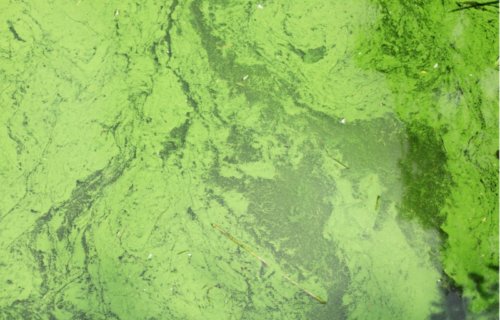NANTUCKET, Mass. — Toxic algae blooms are not a new problem in local lakes and ponds around the world. In fact, environmental officials are distinctly aware of how harmful blooms (or pond scum) can be to humans and wildlife. Despite a deep understanding of how dangerous the toxic algae can be, a new report finds there may be even more to worry about than just the water. For the first time, researchers say they’ve discovered one of these toxins being released into the air by pond scum.
Their study detected the algal toxin anatoxin-a (ATX) in the air near a Massachusetts pond overwhelmed by large algal blooms. Unnervingly, scientists refer to this toxin as “Very Fast Death Factor.”
Severe exposure to ATX can cause various health problems, including loss of coordination, muscular twitching, and even respiratory paralysis. Previous studies have connected it to the deaths of livestock, birds, and pets who drink the contaminated water.
How does algae create these toxins?
The gross-looking formations typically “bloom” during the summer, when water temperatures rise. They can crop up on still water, such as a lake or pond, anywhere in the world. However, recent studies find certain toxic blooms can even threaten coastal regions as well.
Cyanobacteria, a single-celled organism, produces ATX. These organisms form an algal bloom when huge amounts of cyanobacteria start growing in surface waters. Fertilizer run-off from nearby fields or improperly treated wastewater can exacerbate the problem when it enters a lake or pond.
Researchers say algae blooms lead to low oxygen conditions, which degrades the water quality. When algae dies, it sinks to the bottom and starts to decompose, a process which uses up the water’s oxygen. In turn, this kills off fish and other animals in contact with the blooms. The blooms then release toxins into the water which cause further harm to animals and, potentially, people as well.
“ATX is one of the more dangerous cyanotoxins produced by harmful algal blooms, which are becoming more predominant in lakes and ponds worldwide due to global warming and climate change,” lead author Dr. James Sutherland of the Nantucket Land Council explains in a media release.
The perfect storm for airborne toxins
Study authors say ATX has never been detected in the air before this study. However, Sutherland’s team suspected it was still possible under the right weather conditions.
Researchers collected samples of airborne particles from Capaum Pond on Nantucket Island between July and October 2019. The team sucked air through a glass fiber filter while the pond was regularly covered with algal blooms. The team then relied on a technique called liquid chromatography-tandem mass spectrometry to detect ATX particles. Researchers also did the same with samples of the pond water as well.
The results reveal ATX was not only present in the water, but one sample did indeed find it in the air too. Study authors say ATX made its way into the air on a foggy September day, coming after a windy night. They suspect the toxin was likely blown from the pond’s surface by strong winds and then protected by the fog.
Despite the discovery, researchers are still trying to figure out how pond scum turns ATX into an airborne particle. They may be contained within tiny droplets (aerosols) or still be inside cyanobacteria blown into the air. It’s also unclear how damaging trace amounts of ATX will be to humans and animals.
Although these results come from one particular pond in Massachusetts, researchers warn people to use extreme caution when approaching algae blooms in any location.
“People often recreate around these lakes and ponds with algal blooms without any awareness of the potential problems,” Sutherland concludes. “Direct contact or inhalation of these cyanotoxins can present health risks for individuals, and we have reported a potential human health exposure not previously examined.”
The study appears in the journal Lake and Reservoir Management.
